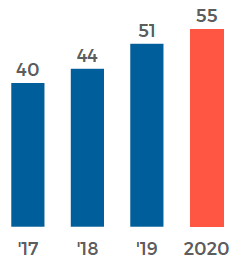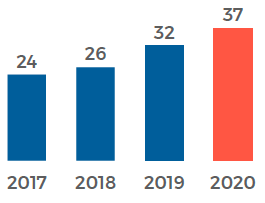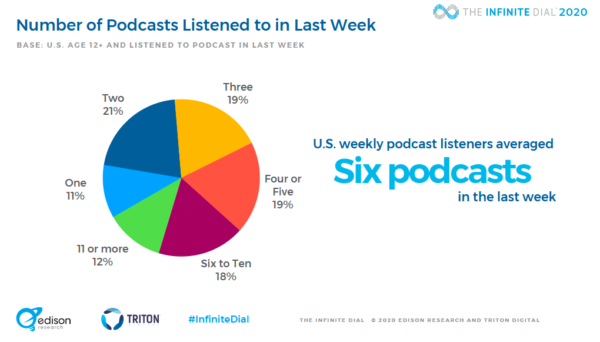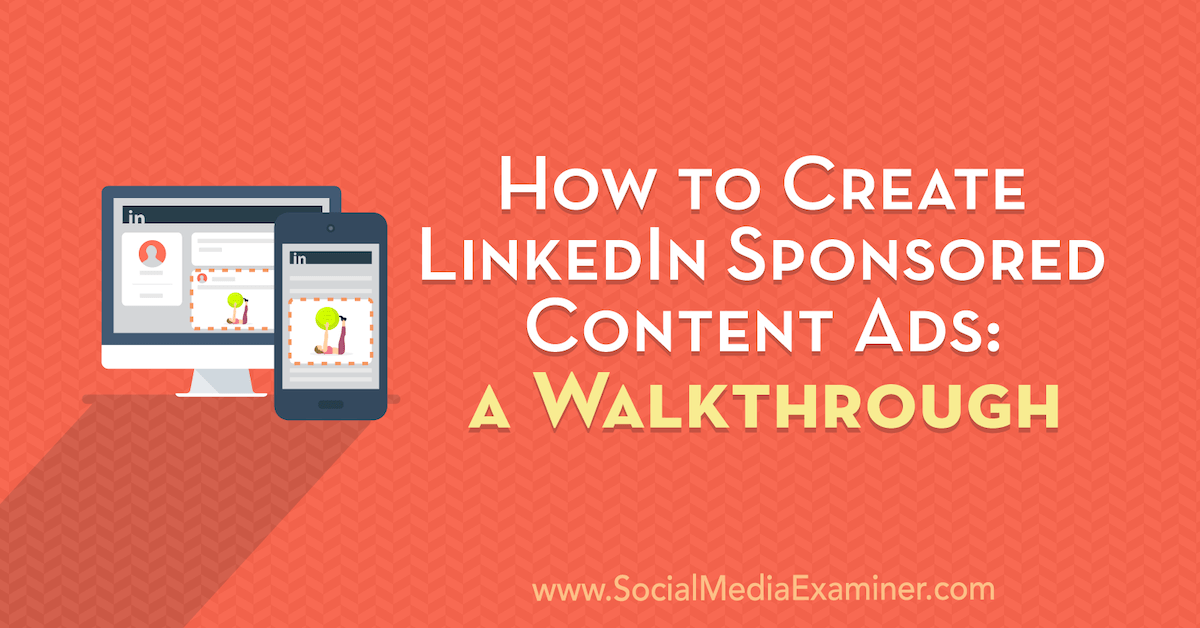https://econsultancy.com/how-coronavirus-impacting-financial-sector-payments-banking-fintech-brand-response/
The financial services sector is currently facing challenges on multiple fronts: banks have reduced their opening hours and in many cases can only serve a few customers at a time due to social distancing rules, putting additional strain on channels like telephone service, online banking and social media.
At the same time, record numbers of consumers are frantically trying to contact their bank with questions, concerns or to request special measures as their finances have been impacted by the fallout from the coronavirus – many have lost jobs, seen their incomes vanish, and are in fear of defaulting on loans or missing mortgage payments. Businesses, too, are in need of additional help as many have seen their revenue drop dramatically or dry up altogether.
Meanwhile, fintech firms may be facing a drop in demand as customers opt for safer, more predictable investments in the current fraught environment, although some will be well-placed to benefit from the increased demand for online and mobile banking and payments. Many are even offering their services to consumers and businesses for free while the coronavirus crisis is ongoing.
The situation will require constant, careful handling from finance companies as they seek to reassure consumers, respond to their concerns, and earn their trust during this volatile period – and a lot may depend on just how well companies’ digital infrastructure and services can handle the increased demand.
Banking
In the UK, many banks have been offering their customers three-month “mortgage holidays” if they think they will be unable to make payments on their mortgage due to the coronavirus crisis, as part of a raft of measures unveiled by the government to help struggling consumers during the pandemic.
However, the demand has been such that banks have been unable to respond to customers in a timely fashion as phone lines are overloaded with callers desperately seeking to confirm whether they are eligible, or find out how the measures will work. Lloyd’s, Natwest, Barclays and Santander are among the banks that have begun enabling customers to make an application via an online form to ease the strain on their phone networks.
https://platform.twitter.com/widgets.js
Many are also fielding angry enquiries on social media from frustrated customers who are unable to get through or have more ordinary issues that aren’t being dealt with as coronavirus concerns swamp the online systems and communications channels.
https://platform.twitter.com/widgets.js
https://platform.twitter.com/widgets.js
Now more than ever, it will be crucial for banks to be responsive on social media, since customers will be using all the channels they have to get in contact – and anything less than a quick response will only make things worse.
Many banks are also taking the opportunity to highlight to their customers – on their websites and via social media – that they can carry out their banking online or on mobile, and use online chat or social media to resolve an issue. NatWest has announced a dedicated customer care helpline for customers over 70 and those in a period of prolonged isolation; it has also been using its social media presence to debunk some common coronavirus misinformation and scams.
https://connect.facebook.net/en_GB/sdk.js#xfbml=1&version=v6.0
4 of the most common Coronavirus (COVID-19) scamsHere’s what you need to know to keep yourself safe – tap each one to…
Posted by NatWest on Wednesday, 18 March 2020
In the United States, banks have been offering up a range of measures to help consumers affected by coronavirus, including waiving fees and penalties for a short period of time, offering hardship and payment loan assistance, and making considerable donations to efforts to fight the virus. In particular, Goldman Sachs announced that customers of its digital bank, Marcus, and its Apple credit card can take an extra month to make payments with no penalty or additional interest if they are financially stretched due to the coronavirus.
Bank of America has also launched a dedicated Client Assistance Program for those impacted by the coronavirus, which includes measures such as refunding overdraft fees and maintenance fees, allowing customers to defer payments, and pausing foreclosure sales, evictions and repossessions.
https://platform.twitter.com/widgets.js
Many similar measures are being seen around the world, from Indian Bank urging its customers to use mobile and internet banking to the Australia and New Zealand Banking Group promoting banking via its app and telephone services, launching a major COVID-19 support package, and raising awareness about coronavirus-related scams.
Payments
In the payments industry, the coronavirus outbreak is helping to accelerate the adoption of certain types of payment technology, such as contactless payments, due to fears about germs being spread via cash and the use of PIN number pads. Some of those shops that have remained open during the crisis are requiring that customers pay by contactless only as part of their measures to mitigate the spread of the virus.
In the UK, the umbrella organisation for the country’s banking and finance industry, UK Finance, announced that the limit for contactless payments would be increasing from £30 to £45 from the 1st April to facilitate this shift. In Germany, according to the German Credit Agency, more than 50% of payments currently being made by card are contactless, compared with 35% before the coronavirus crisis hit.
Governments in Greece, Ireland, Malta, Poland and Turkey have also announced raises to the contactless payment limit, a move that Visa applauded on its blog, writing, “Here at Visa one of the immediate areas we are working on is to support the rise in contactless payments limits. We know consumers are looking to use contactless as they shop for the things they need. Raising the contactless limit allows them to do that more easily and securely without having to enter their PIN.”
In the United States, where signatures are still commonly required when making payments in-store, fears have also arisen around the potential hygiene implications of using a shared pen. Responding to this, Mastercard tweeted to remind shoppers that since 2018, it has been optional for merchants to require a signature when payments are made with Mastercard:
https://platform.twitter.com/widgets.js
Unsurprisingly, the coronavirus crisis has also triggered a surge in demand for online payments as many people look to ecommerce in lieu of physical shopping, hampered by lockdowns or fearing the crush of panic-buying shoppers. According to estimates by McKinsey & Co, ecommerce transactions in virus-hit Italy have soared 81% since the end of February, as reported by the Wall Street Journal on Monday.
American Express tweeted its encouragement for consumers to support small businesses while observing recommendations to shelter in place, suggesting that they order a delivery, make a purchase online, or purchase a gift card from a small business to use at a later date.
https://platform.twitter.com/widgets.js
The Wall Street Journal also reported that many online payments providers are falling back on contingency plans designed to handle seasonal upswings in online shopping, such as Black Friday, in order to cope with the spikes in demand. Sri Shivananda, CTO at PayPal Holdings Inc., said, “Our mission has never been more critical,” and added that the company’s online platform was designed to handle sudden increases in demand.
However, Gartner Inc.’s Senior Research Director Dayna Ford has warned that despite increased traffic from retail, overall revenue in the e-payments market is likely to decline this year due to losses from areas like the airline industry and the hotel sector.
Fintech
Fintech companies may be facing some of the greatest uncertainty of all. While traditional banks are likely to have sufficient capital to weather customers defaulting on loans or delaying repayments, particularly since the 2007-9 financial crisis, fintech companies are likely to be less protected against major shifts in the financial markets, particularly as customers opt for safer investments and are less willing to take risks with their savings. Venture capital firms, too, may be more cautious with their investments, meaning there will be less funding to go around.
However, as attention increasingly shifts to digital and virtual ways to manage finances, some fintechs will be well-positioned to come out on top.
In keeping with their image as brands that are here to simplify and demystify your finances, digital banks Starling and Monzo have both published blog posts explaining what the stimulus measures introduced by the government mean for consumers and small businesses. Monzo also created a thread on Twitter where customers could raise questions about things that were confusing to them or that they would like to know about their finances.
https://platform.twitter.com/widgets.js
Digital investment management company Nutmeg has been using its Twitter feed to shed light on the current situation with the stock market, explaining terms like “bear market” and “crystallising losses”. The company has also produced content marketing that illustrates how investors could response to the current volatile climate, and is now producing weekly market update webcasts with commentary on what’s happening with the markets and why.
https://platform.twitter.com/widgets.js
Many fintechs have also taken it upon themselves to offer up their services for free, waive fees or prolong free trials, in the midst of the crisis – no doubt hoping to do some social good but also prove the value of their services at a time when digital solutions are more in-demand than ever. Ron Shevlin of Forbes is keeping a continually-updated list of those fintechs that are providing free technology during the crisis, which features everything from AI engines to cloud-based banking tools, customer onboarding software and digital insurance claims.
The crisis has also given rise to new innovations that respond to particular financial needs. A group of fintech firms from the lending sector, for example, has come together to offer support to SMEs during the coronavirus crisis. The four fintech companies – Wiserfunding, Nimbla, Trade Ledger and NorthRow – have formed a joint lending platform with ‘baked-in risk assessment, KYC and insurance capabilities’ that will be able to rapidly deploy funds to SMEs in need of credit, releasing them within days instead of the usual weeks.
Another team of financial services startups and fintechs has created a proof-of-concept app designed to assist freelancers who are self-isolating during the crisis, allowing them to prove loss of income due to coronavirus isolation.
Of course, there will be huge challenges as well as opportunities. Monzo and Revolut have already been forced to refute rumours of their imminent collapse as a result of the coronavirus pandemic – a situation not helped by a recent Rosenblatt Securities forecast which predicted that a protracted downturn would wipe out $76 billion of unicorn market value and spur a wave of mergers and acquisitions. The report identified marketplace lenders, digital wealth management firms and challenger banks as companies that would be in the ‘firing line’ in the event of a market downturn.
The Financial Brand has predicted that many fintech companies will be forced to find collaboration or investment partners in traditional banking organisations if investment dries up – something that would likely prove a win-win as traditional banking firms seek to beef up their digital infrastructure to serve customers who are self-isolating or sheltering in place. It also said that some early-stage fintech firms may need to shut down.
As with other hard-hit sectors such as retail, the impact will likely be varied, and there will be a number of casualties. However, those companies who are able to adapt and continue providing customers with essential services, even if it is in a different way to usual, will stand a better chance of weathering the storm.
More on coronavirus impact by sector:
The post How is coronavirus impacting the financial sector – and how are brands responding? appeared first on Econsultancy.








